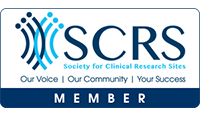Eosinophilic Esophagitis (EoE) is a condition that came about in the early 90s. This condition started affecting the esophagus in patients who had food allergies, eczema, and asthma. EoE results in the inflammation of the esophagus in adults and children. The symptoms are primarily similar to reflux symptoms such as difficulty swallowing, the feeling of food being stuck, and abdominal pain. EoE has been seen to develop as a response to certain foods. Wheat, nuts, soy, seafood, egg, and milk are common foods seen as an allergic response. It is very important to seek medical attention in this case as undiagnosed EoE can cause permanent scarring of the esophagus.
How would one become diagnosed with EoE? The first test to determine if someone has this condition would be an upper endoscopy. An endoscopy is a small camera with a light that examines the esophagus. When this is performed, a physician looks for lines and white spots on the esophagus. Once these marks and spots are found the next step would be for a biopsy to be performed. The biopsy is looking for an increase in eosinophils. Eosinophils are immune cells that are the cause of allergic disorders including EoE.
Eosinophilic Esophagitis is most commonly seen in men between the ages of thirty to fifty. Over the years this condition has been increasing in numbers of diagnoses. The increased use of an endoscopy could be why this condition is so commonly found now in patients. However, it is unknown the exact reason on why EoE is rising. The main factor physicians have pointed out with eosinophilic esophagitis is that it results strictly from an allergic sensitivity of a food.
Possible explanations that have arose from the increase in Eosinophilic Esophagitis:
- Environmental factors such as changes in food production, chemical additives, pollutants, and food processing
- Fewer childhood infections increasing allergic diseases
- Current lifestyle and diet possibly changed our microbiome
- Frequent gastroesophageal reflux disease (GERD) breaking the esophagus barrier allowing food allergies to affect the immune system
As there are no treatments that have been approved, many people are being treated with a proton-pump inhibitor (PPI) antacid. The PPI antiacid helps some cases of eosinophilic esophagitis while others may need to focus their attention on the dietary triggers. There have also been liquid steroids that are used to target the esophagus and absorbs through the gastrointestinal tract. The steroids are not a long-term cure as it has been seen the disease comes back following treatment.
If you have eosinophilic esophagitis, one of the main responses is to narrow down foods that give you food allergens. Food elimination can become a long process; however, this step can eliminate eosinophilic esophagitis at its source. Starting with dairy and wheat have been seen as the most common triggers for people with EoE. A person will eliminate for a period of time then have an endoscopy and biopsy to determine if the eosinophilic esophagitis has disappeared. As this step can be a long process, there is hope that eosinophilic esophagitis can be treated completely in the future.
If you experience EoE symptoms, it is important to speak to your doctor or a medical professional about your concerns. If you are interested in participating in a clinical trial, please contact us or visit our current studies page to learn more or see if you qualify.



